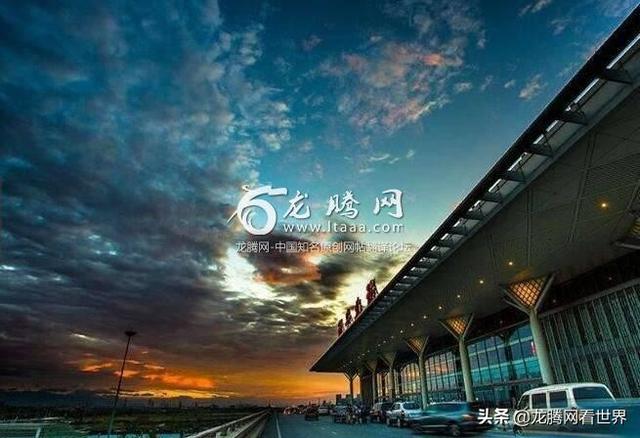观察|科技业激荡20年,走向何方?

日前,博鳌亚洲论坛2021年年会会刊刊发了能源化工基础设施行业、交通运输业、通信科技业、医药/卫生/健康/文旅/咨询/投资/综合行业、制造业、金融业的趋势分析及业界心声,今天就通信科技业方面进行分享。
科技业激荡20年,走向何方?
今天,信息技术的发展速度还在加快,新技术,特别是颠覆性技术,持续不断地涌现,推动经济社会加速向数字化转型。
文 | 谢丽容
在全球科技产业发展的近20年历史中,2000年是一个重要的节点。
2000年,在超过20年的政策扶持、技术扩散和宏观、产业、金融政策的合力作用下,美国通信科技产业达到了前所未有的中兴时期。高科技产业逐渐取代传统制造业成为美国经济发展的主要推动力。
2000年也是中国互联网历史上比较特殊的一个年份,当年,腾讯、阿里巴巴和百度成立;同年,中国三大门户网站搜狐、新浪和网易在美国上市,这些公司构成了中国互联网的基本盘并且延续了接近20年。
和中国不同,2000年以后,亚太地区另外两个科技强国韩国和日本在科技领域的积累以集成电路见长。韩国拥有三星和LG等国际一线电子消费品牌,其中,三星是全球第一的手机设备供应商,并在屏幕、内存芯片和缓存芯片市场拥有近乎垄断的地位(全球70%的动态随机存取存储器市场和50%的NAND闪存市场)。
相对比来说,日本并没有这么一家全产业链跨时代的公司,但日本在半导体领域的实力雄厚。日本公司掌握了集成电路领域上游关键位置,拥有基础高精尖材料的最强话语权。比如,用于制造柔性有机发光二极管显示器的聚酰亚胺,用于内存芯片的涂层物质的抗蚀剂,生产这些基础材料的日本公司,是全球其他公司的总和甚至更多。
近十几年来,中国政府十分重视集成电路产业的发展,加上中国台湾在集成电路制造产业的多年积淀,亚太地区在全球半导体产业中的重要位置已经越来越凸显。根据第三方咨询机构埃森哲2020年发布的《亚太四大半导体市场的崛起》报告,亚太地区是全球最大的半导体销售市场,销量占全球的60%,其中仅中国大陆市场的占比就超过30%;收入方面,中国大陆、日本、韩国和中国台湾,占据全球半导体总收入前六大国家/地区的四席。
2000年之后开始的新一轮美国科技发展重心从早期的桌面互联网,转移到了移动互联网为代表的电子商务、移动社交网络,再到智能互联网时代的人工智能、云、大数据、区块链和物联网,全新的商业模式层出不穷,影响的范围也越来越广,引起了经济社会各个方面的深刻变革。
亚太移动互联方兴未艾
亚太地区的科技发展基本上在2000年以后,且相较于美国科技产业的全“面”发展,亚太地区各国国情不同,能力有限,科技产业发展则更加侧重于“点”。
中国在经历了短暂的桌面互联网时代之后,以2008年底3G网络全面商用为起点,快速进入移动互联网时代。网络方面,三大电信运营商和华为中兴等电信设备商在移动通信网络方面的创新和跨越式发展引人注目。中国快速成为全球网民最多、网络覆盖最广的国家。
整个移动互联网中兴时期(2008年底3G商用-2015年4G商用),软件行业的发展,商业模式的创新要远活跃于技术的创新。大量的中外风险投资开始涌入这个行业,也更加青睐商业模式走在前面的初创企业。
移动互联网的发展离不开智能手机的普及,短短20年时间,中国不仅成为全球智能手机最大的销售国和制造国,全球70%的智能手机及零部件在中国组装生产。
韩国和日本的科技产业发展相对突出。移动通信网络基础设施的普及和发展是产业发展的前提,日韩均激进布局了3G-5G网络,产业和技术发展上,韩国和中国最为相似,具备开放的科技创新环境和活跃的创新能力,并在各种政治和商业因素的影响下,进一步夯实了其在全球科技产业链上的重要位置。
日本的移动互联网创新最终走向了封闭式创新,即仅在日本厂商和国内循环发展的圈子里创新。这些年来,日本在全球的科技影响力有所减弱,但在半导体集成电路领域的独特优势目前还难以被取代。
印度跳跃了2G桌面互联网时代,直接进入3G和4G移动互联网,这些年来,由于其人口红利潜力巨大,被公认为全球最有潜力的区域市场,大量资本和公司涌入印度,印度的移动互联网创新在全球资本的渗透和帮助下,快速迭代发展。
亚太地区其他国家中,近年来,中东国家不断寻求经济多样化转型。疫情防控期间,地区多国加大政策支持力度,不断扩大互联网基础设施建设,努力创造数字经济产业良好营商环境,助推数字化转型进程。中东地区数字经济相关行业和企业的快速壮大,数字经济转型将是中东国家实现经济多元化的重要一环。
东亚各国拥有丰富庞大的用户市场,并在近年来涌现出了一批本土互联网企业,且渐成气候。但各国面临同样的问题:人才相对缺乏、资本市场建设不完善、缺乏相应的产业配套、商业模式创新能力有限。
数字科技的战国时代
如今,以人工智能、云、大数据、区块链和物联网为代表的新一轮数字科技变革与产业革命方兴未艾,全球经济和科技重心不断向东转移,各国空前重视科技强国战略,大国间的科技竞争进入“战国时代”。
中国与美国在数字化转型进程中成为引路的先锋,中国也成为新一轮科技革命和产业变革的主要参与者和推动者。2017年,中国数字经济规模占GDP的比重为6%(狭义)-30%(广义),美国为6.9%(狭义)-21.6%(广义),而全世界为4.5%(狭义)-15.5%(广义)。中、美两国还合占全球云计算市场的75%以上。
另一个值得注意的趋势是,以人工智能和云为代表的这一轮数字革命浪潮中,中国的技术创新能力和节奏总体来说有所改善,以人工智能为例,中国产业界在人工智能领域的技术研究和创新意识,远超移动互联网时代,政策和产学研领域的催化、联动效应也开始发挥作用。在集成电路半导体领域,上到国家政策、资本金融市场(科创板)的设立,下到技术研发链和产业发展、人才培养等,中国集成电路产业已经在新一轮迭代升级的路上。
日本从2014年开始积极发布国家层面的人工智能战略、产业化路线图,旨在结合机械制造及机器人技术方面的强大优势,推动超智能社会5.0建设,立足自身优势,确立人工智能、物联网、大数据三大领域联动,机器人、汽车、医疗等三大智能化产品引导,突出硬件带软件,以创新社会需求带人工智能产业发展。
韩国的数字科技国家策略和日本有异曲同工之妙。在移动通信网络方面,早在金大中政府时期,韩国就把发展以宽带为代表的信息技术上升为国家战略。韩国是全球最早推出5G商用的国家,2018年12月就开始发放5G牌照,2019年4月推出5G技术。到2019年6月底,超过160万人转用了新服务,占全球5G用户总数的77%,抓住了先发机会。
和日本一样,韩国重视机器人和汽车产业的科技转型,韩国政府的《未来汽车产业发展战略》中,对包括无人驾驶、电动汽车、氢动力电池汽车在内的未来汽车产业发展方向作出规划。其中,力求2027年实现无人驾驶商用化等内容成为亮点。
在核心国家的带动下,越来越多国家加入了这一轮数字科技革命浪潮。不过,亚太地区除中日韩外,东盟十国(新加坡除外),制造业能力发达但信息科技综合布局相对较晚。“一带一路”也为亚太地区各国的数字科技综合发展起到了助推作用。
以东盟为例,2018年,东盟批准了《东盟数字一体化框架》(ASEANDigitalIntegrationFramework,以下简称《框架》)。2019年,东盟又进一步制定了《〈东盟数字一体化框架〉行动计划2019-2025》(简写为DIFAP,以下简称《行动计划2025》)。《框架》确定了六个中期优先领域,目的在于解决关键障碍,推动实现东盟地区的数字互联互通。六大领域包括了无缝贸易、数字贸易创新、数字支付、人才和促进创业等。《行动计划》细化到了数十项更加具体的举措,以数字前沿问题为核心,既包括制定政策指南文件,也包括建成东盟区域内统一的制度安排和平台,还包括能力建设、技术援助和研讨会等务实项目。
由于东盟成员国之间存在发展差距和数字鸿沟,一些成员国,特别是CLMV国家(柬老缅越),在获取资源和技术支持方面存在困难,也特别需要借鉴外部国家的先进经验。因此,东盟倚重外部合作伙伴国、利益相关者和私营部门提供这些资源、开展项目合作,很多倡议和行动都已得到中、美、日、澳、欧等外部发展伙伴国以及私营部门的资金、技术和智力支持。
位于中东地区的阿联酋以石油产业起家,从2015年开始向多元化经济模式转型。过程中,始终大力支持创新科技的发展,不断出台有利于该领域的商业政策。
阿联酋政府2021年初公布了加快疫情后经济复苏进程的计划。其中包含加速向全面的数字化经济体转型,将重点放在人工智能、5G网络、物联网和智能城市建设上。同时还鼓励在区块链、“绿色经济”、再生能源、电动汽车、3D打印、机器人、生物科技和基因工程等领域的投资。阿联酋希望在2031年使阿联酋成为人工智能领域的全球领导者。
全球经济价值链目前的趋势是清晰的,新兴经济体的崛起只是时间问题。“一带一路”倡议正是在这样的背景下提出的。“一带一路”沿线国家以发展中国家和新兴国家为主,人口占世界人口的60%以上,经济总量约为全球的三分之一,潜力巨大。仍以互联网产业为主,中国科技资本出海的第一站覆盖了东南亚几乎所有地区,这一方面为当地的科技产业活跃度带来催化作用,带动了当地公司和产业的自身发展。
中国与东盟从2019年就在数字经济领域展开合作,双方签署的《东盟互联互通总体规划2025》和《中国-东盟智慧城市合作倡议领导人声明》标志着中国与东盟将在人工智能、大数据、网络安全、智慧城市等领域开展广泛的创新合作,为东盟地区实现全面互联互通增添新动力。
中东地区各国目前与中国的数字合作成果也十分显著。华为已与科威特、阿联酋、沙特、巴林等国10余个中东电信运营商签署技术协议,建设5G网络;沙特数据与人工智能局不久前与中国相关企业和机构签署合作协议,内容涉及智慧城市建设、阿拉伯语人工智能技术开发等;埃及教育部与福建网龙网络公司合作,推出在线教育产品,覆盖全埃2200多万学生和100多万教师,在因疫情停课期间提供远程学习支持,并为疫情后的教学提供长期服务;中国—阿联酋经济贸易数字展览会、中国—中东及北非(摩洛哥)国际贸易数字展览会等在线展会相继举办,运用互联网、云技术创新展会服务模式和外贸洽谈方式,深化中国与中东地区的数字经济合作。
数字经济的特点之一是非竞争性,即数字平台和信息技术是非竞争的,各国可共享,规模越大,边际成本就越低。随着全球疫情防控趋向长期化,各国人民也逐渐意识到数字经济有其独到的便捷性,数字化转型已成为公认的启动经济复苏的必选项之一。
Where Is The Technology Industry Heading After20 Years of Ups and Downs?
As information technology gaining more momentum, the ever-emerging newtechnologies, especially disruptive ones, are propelling the digitalization ofeconomic and social transformation.
By XIE Lirong
The year 2000 marks a critical year in the nearly 20-year history ofthe development of the global technology industry.
In 2000, under the joint endeavor of more than 20 years of policysupport, technology diffusion as well as combined effect ofmacro industrial and financial policies, the U.S. communicationtechnology industry reached an unprecedented mid-boom. Hightech industries gradually replaced traditional manufacturing as themain driving force behind U.S. economic development.
The year 2000 is also a special one in the history of China's Internetfor it witnessed the foundation of Tencent, Alibaba and Baidu. Inthis very same year, China's three major portal websites—SOHU,SINA and NetEase were listed in the U.S. These companies formed the base of China's Internet which lasts for nearly 20 years.Unlike China, South Korea and Japan, another two technologypowerhouses in the Asia-Pacific region, have been accumulating progresses in integrated circuits in technology since 2000. SouthKorea boasts top-tier international consumer electronics brandssuch as Samsung and LG. Among them, Samsung is world'snumber one supplier of mobile devices, nearly a monopoly in thescreen, memory chip and cache chip markets (it occupies 70% ofthe global DRAM (dynamic random-access memory) market and50% NAND flash memory market).
In comparison, there is no epoch-making Japanese enterprise that possesses products across full industry chain.However, Japanenjoys great competence in the field of semiconductor as itscompanies hold the key position in the upstream part of integratedcircuits and have the strongest say in the basic high precisionmaterials. For example, among companies that produce basic materials such as polyimide for flexible organic light-emittingdiode displays, resist for the coating of memory chips, Japanese ones account for half or more than half of world’s total.Over the last decades or so, the Chinese government’s emphasis on the development of the integrated circuit industry coupled with Chinese Taiwan's years of accumulation in the industry enablethe Asia-Pacific region to gain an increasingly prominent positionin the global semiconductor industry.
The new round of U.S. technology development that began after 2000 has shifted the focus from the previous desktop Internet tothe mobile Internet represented by e-commerce, mobile social networks, and then to the intelligent Internet era featuring artificial intelligence(AI), cloud, big data, block chain and the Internet of Things, which leads to the fact that new business models keepemerging with more extensive influence, triggering profound changes in all aspects of the economy and society.
Mobile Internet in Asia-Pacific Region is in the Ascendant
The technology development in the Asia-Pacific region basicallystarted after 2000. Compared with the U.S. technology industry which grows comprehensively in the whole business, Asia-Pacificcountries focus more on the subsections due to their differentnational conditions and limited capacity.
After a short period of desktop Internet, China rapidly enteredthe mobile Internet era, marked by full commercialization of 3G network at the end of 2008. The three telecom operation tycoonsand telecom equipment manufacturers such as Huawei and ZTEhave left world with great impression with their remarkable innovations and leapfrog development in mobile telecommunicationnetworks. Against this background, China quickly became thecountry with the largest number of Internet users and the widest network coverage worldwide.
Throughout mid-boom of the mobile Internet (from 3Gcommercialization at the end of 2008 to 4G commercialization in2015), the development of the software industry and the innovationof business models were far more active than that of the technology. A large amount of Chinese and foreign venture capital was pouredinto this industry, favoring startups whose business models weremore developed than others.
The mobile Internet cannot develop without the popularity of smart phones. Within a short period of merely 20 years, China hasbecome the world's largest seller and manufacturer of smart phoneswith as many as 70% of the world's smart phones and components assembled and produced in China.
South Korea and Japan are relatively outstanding in their technology development. With the popularity and developmentof mobile communication network infrastructure serve as aprerequisite for industrial and commercial development, both Japanand Korea have laid out 3G-5G networks in a radical manner. South Korea shares great similarity with China in the industrialand technological development. Enabled by an open technologyinnovation environment, active innovation capabilities and variouspolitical and commercial factors, it has further strengthened itsimportant position in the global technology industry chain.
Japan's mobile Internet innovation eventually goes down theroad of closed innovation, i.e., innovation only takes place in the community of Japanese manufacturers and domestic circulardevelopment. Over the years, Japan's global technology influencehas waned, but its unique advantage in semiconductor integratedcircuits remains irreplaceable at current stage.
India skipped the 2G desktop Internet era and went directly to 3Gand 4G mobile Internet. Over the years, it has been recognizedas the world's most promising regional market due to its great potential brought by the large population. As a result, a largeamount of capital and companies have swarmed to India. Thanksto that, the country has now witnessed the rapid and iterativedevelopment in mobile Internet innovation with the penetration andhelp of global capital.
Among other countries in the Asia-Pacific region, Middle Easterncountries have been constantly seeking transformation in economicdiversification. During the Pandemic prevention and control, many countries in the region increase policy support to continuous lyexpand Internet infrastructure as an effort to create a soundbusiness environment for the digital economy industry and boost the digital transformation. As digital economy-related industriesand enterprises in the Middle East growing rapidly, digital economy transformation will be an inseparable part of economic diversification for Middle Eastern countries.
A number of local Internet companies have emerged in recentyears in East Asian countries as a result of their huge user markets,and they are on the right track of development. Nevertheless, each country faces the same problems: relative lack of talents,incomplete capital market, short of corresponding industrial support, and limited capability to innovate business models.
The Epoch of Warring States of Digital Technology
Nowadays, a new round of digital technology transformationand industrial revolution, represented by AI, cloud, big data,block chain and Internet of Things, is emerging. As the focus of global economic and technology shifting eastward, countries payunprecedented stress on empowering country with technology, marking the epoch of "Warring States Epoch" in technological competition among major countries.
The U.S. and China have become leading countries in the digital transformation, and the latter has become a major player and driverof the new round of technological revolution and industrial change. In 2017, China’s digital economy accounted for 6% (in a narrowsense) to 30% (in a broad sense) of GDP in its total, while thenumber was 6.9% (in a narrow sense) to 21.6% (in a broad sense)in the U.S., and 21.6% (in a broad sense) and 4.5% (in a narrowsense) to 15.5% (in a broad sense) worldwide. China and the U.S.combined occupied more than 75% of the global cloud computingmarket.
Another trend merits noting is that capabilities and pace of China'stechnological innovation have been generally improved in the waveof digital revolution represented by AI and cloud. Take AI as anexample, research and innovation awareness of Chinese industrycircle in the field far exceed that of the mobile Internet era. Thecatalytic and linkage effects of policies and collaboration amongenterprises, universities and research institutes are beginning toplay their roles. China's integrated circuit industry is already on itsway to a new round of iteration owing to national policies and theestablishment of capital finance market (Science and TechnologyInnovation Board) from the government and technology R&Dchain and industrial development, talent training from the industry itself.
Since 2014, Japan has been actively launching its national AIstrategy and industrialization roadmap, aiming to combine its greatstrength in machinery manufacturing and robotics to promote Society 5.0. Through relying on its own advantages, Japan strives to propel AI industry development with innovative social demands by promoting coupling effects among AI, Internet of Things, bigdata and applying the strategy highlighting hardware development driving software development guided by three major intelligent products — robotics, automotive and medical industry.
South Korea's national strategy of digital technology is similarto that of Japan's. In terms of mobile communication networks, it has made information technology development represented by broadband a national strategy as early as Kim Dae-Jung administration. As the first country launched commercial 5Gworldwide South Korea issued 5G licenses in December 2018 and launched 5G technology in April, 2019. By the end of June 2019, more than 1.6 million people had switched to 5G, accounting for 77% of total 5G subscribers worldwide. Therefore, South Koreahas seized the first-mover opportunity. South Korea puts emphasis on the technological transformation of robotics and automotive industries as Japan.
The South Korean government has presented Future Vehicle Industry Development Strategy with direction for the future automotive industry in areas including driverless cars, electric and hydrogen fuel cell vehicles. Among them, striving for commercialization of driverless cars by2027 is the highlight in the strategy.
More and more countries join the wave of digital technology revolution driven by the influence of core nations. However, the Asia-Pacific countries, in addition to China, Japan and South Koreaand the ten ASEAN countries (except Singapore), are relatively latein planning integrated layout of information technology despite itsdeveloped manufacturing capabilities. Besides, China’s Belt andRoad Initiative has also fueled the comprehensive development ofdigital technology in Asia-Pacific countries.
Take ASEAN as an example, ASEAN approved the ASEAN Digital Integration Framework (hereinafter referred to as the Framework)in 2018, and it further developed the ASEAN Digital IntegrationFramework Action Plan 2019-2025 (abbreviated as DIFAP, hereinafter referred to as the Action Plan 2025 ) in 2019. The Framework identifies six medium-term prioritized areas, aiming ataddressing key barriers and advancing digital connectivity in theregion. The six areas include seamless trade, innovation in digitaltrade, digital payment, talent, and promoting entrepreneurship. The Action Plan specifies dozens of more specific initiatives. Centeringaround frontier digital issues, both the policy guidelines, theestablishment of a unified institutional arrangement and platformwithin the region, as well as pragmatic projects such as capacitybuilding, technical assistance and workshops are included.
Due to the gap in development and digital divide among ASEAN,some member countries, especially the CLMV ones (Cambodia,Laos, Myanmar and Vietnam), have difficulties in accessingresources and technical support, and they also particularly need tolearn from the advanced experiences of other countries. Therefore,ASEAN relies on its external partners, stakeholders and privatesectors for these resources and project collaboration. By far,many initiatives and actions have received financial, technical andintellectual support from external development partner countriessuch as China, the US, Japan, Australia and Europe, as well as theprivate sector.
Located in the Middle East, the UAE, who accumulated the wealththrough oil industry, has been transforming into a diversified economic model since 2015. During the process, its governmenthas always been supporting technology, innovation with continuousbusiness policies in favor of the sector. The UAE governmentunveiled a plan in early 2021 to accelerate the post-pandemiceconomic recovery, which included the acceleration of the transitionto a fully digital economy, concentrating on AI, 5G networks,the Internet of Things and smart city building. In the meantime,it also encourages investment in areas such as blockchain, the"green economy", renewable energy, electric vehicles, 3D printing,robotics, biotechnology and genetic engineering.
The UAE hopes to make itself a global leader in AI by 2031.Since the current trend of the global economic value chain isclear, the rise of emerging economies is only a matter of time. It is in this context, the "Belt and Road" initiative is put forward. Considering that countries along the "Belt and Road" initiativeare mainly developing and emerging countries, who are home tomore than 60% of the world's population and account for one third of the world's total economic volume, they possess great potentialto be tapped. The first destination of Chinese overseas investmentin technology was Internet industry, covering almost all areas inSoutheast Asia, which serves as catalyst for the liveness of the local technology industry and the development of local companies andindustries themselves.
China has been cooperating with ASEAN in the digital economysince 2019. The signing of the Master Plan on ASEAN Connectivity 2025 (MPAC 2025) and the ASEAN-China Leaders' Statement on Smart City Cooperation Initiative signifies that Chinaand ASEAN will work innovatively on areas covering a widerange of fields such as AI, big data, cybersecurity and smart city,contributing new momentum to achieving full connectivity in theASEAN region.
Countries in the Middle East are also reaping significant resultsfrom their current digital cooperation with China. For instance,Huawei has signed technical agreements with more than 10 MiddleEast telecom operators in Kuwait, UAE, Saudi Arabia, Bahrain andother countries to build 5G networks; the Saudi Authority for Dataand Artificial Intelligence(SDAIA) has recently signed cooperationagreements with relevant Chinese enterprises and institutions,covering smart city construction, AI technology developmentof Arabic language, etc. Egypt’s Ministry of Education hascooperated with Fujian Net Dragon Websoft to launch onlineeducation products, covering more than 22 million students and 1million teachers in Egypt, providing distance learning during the suspension of classes due to the Pandemic and long-term servicesfor post-pandemic teaching; online exhibitions such as the China UAE Economic and Trade Digital Expo and the China-Middle Eastand North Africa (Morocco) International Digital Trade Fair wereheld in succession. Digital economy cooperation between Chinaand the Middle East gets deepened by the means of Internet, and innovative exhibition service models enabled by cloud and foreign trade negotiation.
One of the features of the digital economy is its non-competitiveness,which means that digital platforms and information technology arenon-competitive in nature and can be shared among countries. The larger the scale is, the lower the marginal cost will be. As globalpandemic prevention and control tends to be a long-term trendand people in all countries has gradually realize that the unique convenience of digital economy, digital transformation has becomeone of the recognized must-haves to initiate economic recovery.

崔泰源
SK 集团董事长兼 CEO
值此博鳌亚洲论坛2021年年会召开之际, SK集团向论坛致以诚挚的祝贺!
回顾过去的一年,新冠肺炎疫情席卷全球,世界经济和国际秩序正在进行深刻调整。我们期待博鳌亚洲论坛2021年年会深入探讨上述热点问题,在一次又一次的思想碰撞中,为后疫情时代的世界发展和全球治理凝聚更多共识,注入更多动力。
On the occasion of the Boao Forum for Asia(BFA) Annual Conference 2021, SK Group wouldlike to extend our sincere congratulations to theForum.
The world was challenged by COVID-19 in thepast year and as a result, global economy andinternational order are going through profoundchanges. We look forward to having in-depthdiscussions on these topical issues at Boao Forum for Asia Annual Conference 2021 and hopefully, through open discussion and exchange ofopinions, more consensus will be reached andmore momentum added for world developmentand global governance in a post-COVID era.

刘庆峰
科大讯飞董事长
新冠肺炎疫情加速了数字化生存时代的到来,人工智能技术成为后疫情时代解决社会重大命题的刚需。
我们相信,唯有和平对话,共同参与全球治理,才能实现亚洲乃至全球经济一体化的繁荣。
因为相信,所以看见。我们非常期待,在2021年的博鳌亚洲论坛,和来自全球的代表们一起携手,用科技的力量共同建设一个更加美好的世界。
The pandemic has accelerated the arrival of thedigital era, and artificial intelligence technologyhas become an immediate need to solve majorsocial problems in the post-pandemic era.
We believe that only through peaceful dialogueand joint participation in global governance canwe achieve prosperity in Asia and global economic integration.
Because we believe, we see. We are lookingforward to joining hands with delegates from allover the world at BFA 2021 to build a better worldwith the power of technology.

立足亚洲 面向世界 传递论坛最新动态 促进亚洲深度合作全球重要对话的传达者 亚洲共同发展的瞭望者





















评论